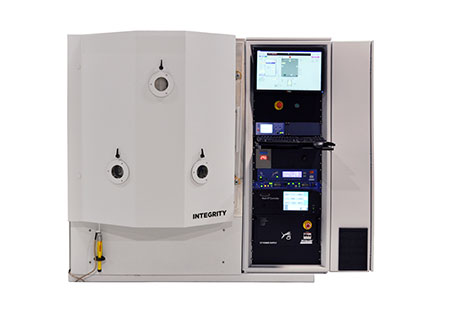Integrity
The Integrity is configured for demanding optical coating, semiconductor and compound semiconductor applications. A temperature management system supports a fluid-cooled substrate stage for small grains and textured films.
View DetailsIndium bumps are widely employed in high density interconnection between infrared focal plane arrays and silicon read out integrated circuits by flip-chip bonding. Indium bump array formation is a critical step in the flip-chip fabrication process. As consumer technology advances, feature sizes on focal plane arrays are getting smaller. As a result, indium bump electroplating has become an ineffective fabrication technique. A better solution, providing good lift-off yield, high shear strength and collimated thermal evaporation is available with indium bump deposition. Collimation control provides optimized lift-off for more productive yields by eliminating edge effect and minimizing lift-off issues.
To meet application demands for next-generation microbolometers, developers need a thin film process that can produce coatings with an improved thermal response while maintaining deposition rates suitable for manufacturing. Denton’s solution, a bias target ion beam sputtering (BTIBS) system, is proven to increase the thermal response of VOx for real-world production of thermal imaging cameras. The system offers independent control over sputtering parameters to control VOx phase while improving target utilization and uptime for maximum productivity.
When shear strength between wafers is low, small shear strain puts bumps at a higher risk of tearing. Poor crystal structure is the primary cause of poor shear strength, and poor crystal structure itself has two causes: geometry and temperature.
In the case of geometry, crystal structure is impacted by an imprecise angle of incidence during indium deposition, which leads to poor indium fill. This problem can be averted when the indium source offers collimation control, which creates a 7° maximum deviation from the direct line of sight, ensuring direct deposition. This collimation control also enables high yield lift-off.
In the case of temperature, crystal structure is impacted when the substrate stage is too warm for indium’s low melting point (156.6°C). A excellent solution for this challenge is offered by Denton Vacuum’s Integrity Indium Coating solution: a lower-temperature (super-cooled) substrate fixture that is well suited to textured films and small grains, ensuring good crystal structure and higher shear strength.
Denton Vacuum’s consistent and repeatable thin film deposition solutions for indium bump offer collimated control and a cooled substrate stage for maximum yield. View our product offerings below for more information.

The Integrity is configured for demanding optical coating, semiconductor and compound semiconductor applications. A temperature management system supports a fluid-cooled substrate stage for small grains and textured films.
View Details